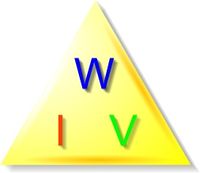Electrical Power
From DT Online
Power is ‘the rate of doing work’ - i.e. the same work is done lifting a weight quickly or slowly but more power is needed to do it quickly.
Work is measured in joules and the SI unit of power is the watt, or one joule per second - the International System of Units (SI) is the modern form of the metric system.
For electrical power a watt (W) is equal to one unit of electrical current, amp (A), multiplied by one volt (V).
Note: all three units are named after people which is why capital letters are used for the letter symbol - but not for the unit name itself.
If the three symbols for watt (W), current (I) and voltage (V) are arranged in a triangle as shown, then the various relationships can easily be seen - the symbol (I) is used to represent the current which is measured in amps (see below)
- Watts = Volts x Current (W = V x I)
- Volts = Watts / Current (V = W / I)
- Current = Watts / Volts (I = W / V)
A similar triangular graphic may be used to show the various Ohm's Law relationships between electrical voltage (V), current (I) and resistance (R).
Through these Ohm's Law relationships, it can be seen that V = I x R so if V is substituted above then Watts can also be derived as current squared multiplied by resistance (W=I2 xR)
Note: Abbreviations are usually named after the thing you're measuring, not the unit. So resistance is R, not O for ohms (Ω) but voltage is measured in volts, so it's V either way (the term 'electromotive force and the symbol E are becoming less common, replaced by voltage and V)
